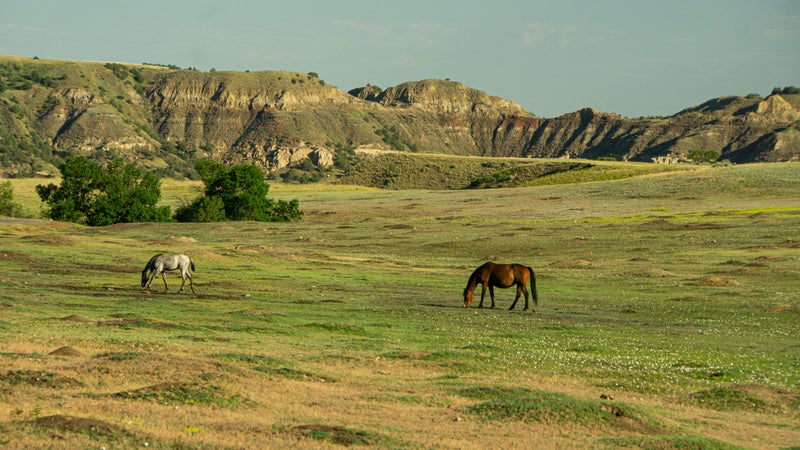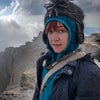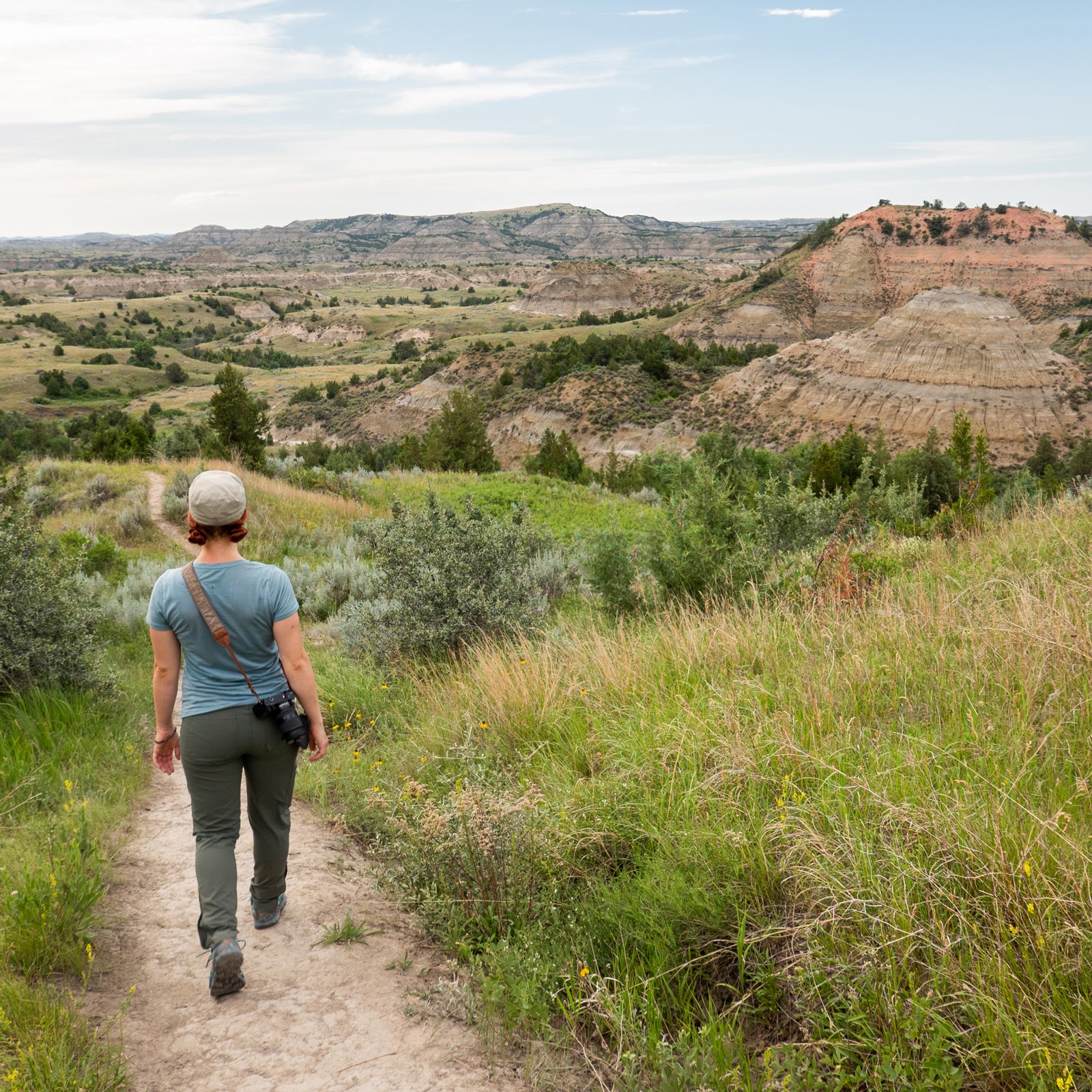62 Parks Traveler╠řstarted with a simple goal: to visit every U.S. national park. Avid backpacker and public-lands nerd╠ř╠řsaved up, built out a tiny van to travel and live in, and hit the road. The parks as we know them are rapidly changing, and she╠řwanted to see them before itÔÇÖs too late.
Pennington╠řis committed to following CDC guidelines during the COVID-19 pandemic to ensure the safety of herself and others. SheÔÇÖs visiting new parks while closely adhering to best safety practices.
Five minutes after starting on a trail at Theodore Roosevelt National Park, I nearly stepped on a prairie rattlesnake. Wait, let me rephrase that. I nearly stepped on the rattlesnake, then recoiled, tripped, nearly stepped on╠řit again, rolled my ankle, and ran back to my boyfriend, who was laughing at how flushed my face and chest had become.
IÔÇÖd heard that the wildlife sightings would be pretty outrageous amid╠řthis 70,448-acre expanse of rugged badlands cut through by the Little Missouri River. I just didnÔÇÖt realize how close I would actually get.

Theodore Roosevelt National Park was founded╠řto commemorate the death of the conservationist president and to preserve╠řa little-known corner of western North Dakota that first inspired his love of the outdoors. The╠ř230 million acres of public land that Roosevelt╠řhelped create in the U.S. forever shifted the way the world would think╠řabout and protect╠řits natural wonders. But itÔÇÖs important to note that his legacy is ÔÇöheÔÇÖs been legitimately criticized for his support of the Indian allotment system and the removal of Native Americans from their ancestral homelands.
I slept off my tussle with the rattler and woke up refreshed and ready to explore. Turning onto the parkÔÇÖs most popular╠řattraction in its South Unit, the 36-mile Scenic Loop Drive, I was immediately met with more wildlife. A thundering coterie╠řof chirping prairie dogs darted chaotically around the grasslands. Meanwhile, in the distance, a group of wild horses ran right across the road as a coyote slunk╠řout from a nearby ditch. At one point, I pulled over to hike the short but sweet half-mile Wind Canyon Trail, stopping╠řto take in the dozens of distinct birdsongs fluttering about in the morning air. Though it was a busy╠řsummer weekend in July and visitors abounded, the place was still teeming with animals.
By lunch╠řit was time to scoot over to the parkÔÇÖs less visited North Unit. But╠řas I hugged the curves along the winding park road, I was abruptly met with a traffic jam. To my right was a herd╠řof enormous bison with bright, rust-colored calves sprinting across the road. Not a single car dared to move. The mood was tense.
After a 30-minute standstill, we were able to drive two miles per hour between╠řthe huge beasts, cautiously proceeding so as not to disturb them. Mothers were nursing their young in the road as my van crept╠řpast. Given the fact that a full-grown bison cow can weigh 1,200 pounds, it was equal parts adorable and unnerving.
We capped it all off with an easy two-and-a-half mile out-and-back╠řhike to Sperati Point, tramping through a diverse ecosystem of grasses and wildflowers bursting up in every direction. There wasnÔÇÖt a soul around, and I began to see how Roosevelt may have felt here. A remote expanse of badlands and prairie that humbles the ego instantly. Ragged, dynamic, wild.
62 Parks Traveler Theodore Roosevelt Info
Size: 70,448 acres
Location: Western North Dakota
Created In: 1935 (Roosevelt Recreation Demonstration Area), 1978 (national park)
Best For: Bird-watching, wildlife viewing, hiking, scenic drives, and car camping
When to Go: Summers (50 to 86 degrees) are hot, bustling, and an excellent time to visit the park. Spring (19 to 68 degrees) and fall (19 to 74 degrees) offer milder temperatures and chilly nights. In winter (5 to 33 degrees), the parkÔÇÖs scenic drives stay open as weather conditions permit.
Where to Stay:╠ř, in the parkÔÇÖs South Unit, has views of the badlands and easy access to the╠řmost popular outings. Each site comes equipped with a picnic table and grill. Just watch out for curious bison poking around camp!
Mini ║┌┴¤│ď╣¤═°: Drive the╠ř 36-mile Scenic Loop Drive and hike the Wind Canyon Trail. The winding road will take you through some of the most exquisite painted badlands that this park╠řhas to offer, while providing excellent opportunities for wildlife viewing. Once on the trail, youÔÇÖll enjoy breathtaking views of the Little Missouri River.
Mega ║┌┴¤│ď╣¤═°: Thru–hike the rolling prairie on the╠ř. Derived╠řfrom a local Mandan Tribe phrase meaning ÔÇťan area that will be around for a long time,ÔÇŁ this 144-mile singletrack connects the parkÔÇÖs three units and is an unforgettable way to explore the rustic wilderness that first inspired Roosevelt.


